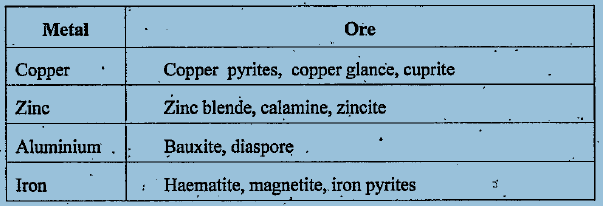Tarnished silver contains Ag2~S. Can this tarnish. be removed by placing tarnished silver ware in an aluminium pan containing an inert electrolytic solution such as NaCl. The standard electrode potential for the half reactions are Ag2S(s)+2e−2Ag(s)2+S1−−0.71v and Al4+3e−Al(s),−1.66~VSolution in Malayalam
Tarnish will, be removed, since the reduction potential of Ag2~S is greater than that of AlH,Ag2~S will-undergo reduction, or will act as cathode, And the following reactions tảkes place. Al+Ag_2 ~S Al^3++2 Ag+S^2- EMF of this reaction, Since emf is. +ve the reaction wili täke place and tarnish will be removed.
Topper's Solved these Questions
Similar Questions
Write the formulas for the following coordination compounds: i) Tetraamminediaquacobalt(III) chioride ii) Potassium tetracyanonickelate(II) iii) Tris(ethane-1,2-diamine)' chromium(III) chioride s iv) Ámminebromidochloridonitrito-N-platinațe(II) v) Dichloridóbis(ethane-l,2-diamine) platinum (iv) nitrate vi) Iron(III) hexacyanoferrate (II)
View SolutionAnalyses the table given below:
 Which of the ores mentioned in the above table can be concentrated by magnetic separation method? Justify your answer.
Which of the ores mentioned in the above table can be concentrated by magnetic separation method? Justify your answer.
View SolutionThe tarnishing of silver ornaments in atmosphere is due to
View SolutionAl3+(aq)+3e−→Al(s) E∘=−1.66V
Cu2+(aq)+2e−→Cu(s) E∘=+0.34V
What voltage is produced under standard conditions by combining the half-reactions witih these standard Electrode Potential?
View SolutionAl^(3+)(aq)+3e^(-)rarrAl(s) E^(@)=-1.66V Mn^(2+)(aq)+2e^(-)rarrMn(s) E^(@)=-1.18V What is the standard potential of a volaic cell produced by using these two half-reactions?
View SolutionTarnishing of silver is due to the formation of
View SolutionTarnished silver contains Ag2S. Can this tarnish be removed by placing the tarnished ware in an aluminium pan containing an inert electrolyte solution such as NaCl ? Given that the standard reduction potentials for the half reactions are : Ag2S(s)+2e^(-)to2Ag(s),+S^(2)(aq), E^(@)=-0.71" V" . Al^(3+)(aq)+3e^(-) to Al(s), E^(@)=-1.66" V" .
View SolutionSilver tarnishes due to the formation of __________
View SolutionThe standard oxidation potentials of Ze and Ag in water at 25∘C are
Zn(s)→Zn2++2e [E∘=0.76V]
Ag(s)→Ag++e [E∘=−0.80V]
Which of the following reactions actually takes place ?
View SolutionTarnishing of silver is an example of
View SolutionA13++3e−→Al(s), E∘=−1.66V
Cu2++2e−→CU(s), E∘=+0.34V
What voltage is produced under standard conditions by combining the half reactions with these standard electrode potentials?
View Solution(i) State Kohlrausch law. (ii) Calculate the emf of the following cell at 298 K: Al(s)//Al^(3+) (0.15M)//Cu^(2+)(0.025M) //Cu(s) (Given E^(@)(Al^(3+)//Al) = -1.66 V, E^(@)(Cu^(2+)//Cu) = 0.34V, log 0.15 = -0.8239, log 0.025 = - 1.6020)
View SolutionStandard electrode potential data is given below :
Fe3+(aq)+e−→Fe2+(aq),Eo=+0.77V
Al3+(aq)+3e−→Al(s),Eo=−1.66V
Br2(aq)+2e−→2Br−(aq),Eo=+1.08V
Based on the data given above, reducing power of Fe2+ Al and Br− will increase in the order :
View Solution(a) Calculate the equilibrium constant for the reaction : Cd^(2+) (aq) + Zn(s) If E_(Cd^(2+)//Cd)^(@) = -0.403 V, E_(Zn^(2+)//Zn)^(@) = -0.763 V (b) When a current of 0.75 A is passed through a CuSO_4 solution for 25 minutes, 0.369 g of copper is deposited at the cathode. Calculate the atomic mass of copper. (c) Tarnished silver contains Ag_2S . Can this tarnish be removed by placing tarnished silverware in an aluminium pan containing an inert electrolytic solution such as NaCl. The standard electrode potential for half reaction. Ag_(2)S + 2e^(-) to 2Ag(s) + S^(2-) is -0.71 V and for Al^(3+) + 3e^(-) to Al(s) is -1.66 V
View SolutionTarnishing of silver is due to formatio of
View Solution
